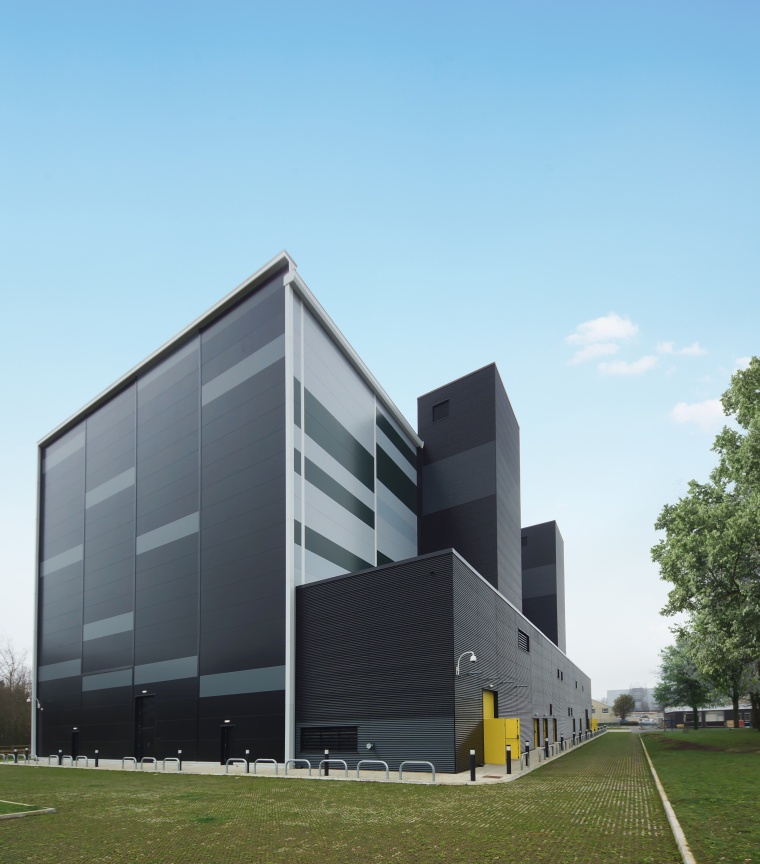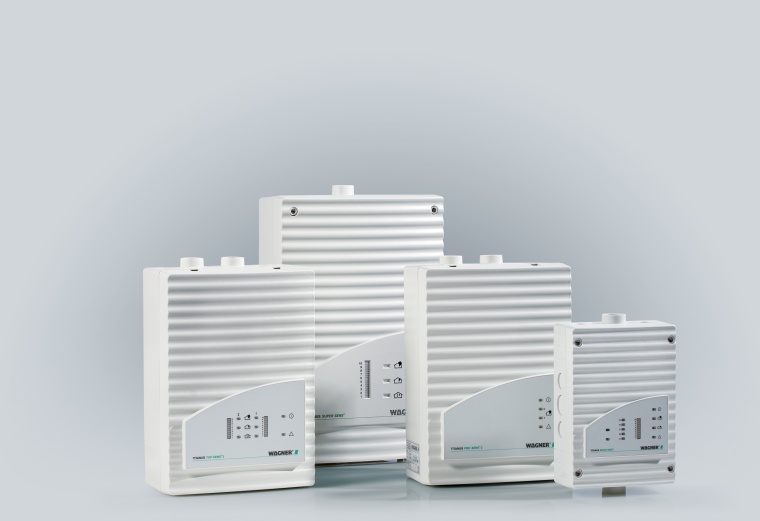Aspiration Smoke Detection Systems
Unlike in times gone by, fires these days are not necessarily associated with a positive outcome. They are rarely used for cooking or generating heat. Instead, fires usually mean d...


Unlike in times gone by, fires these days are not necessarily associated with a positive outcome. They are rarely used for cooking or generating heat. Instead, fires usually mean destruction – especially for companies operating high-bay warehouses, cold storage, data centers, archives and more. According to the Allianz Global Corporate and Specialty Global Claims review 2014, fire is the major cause of property loss by the number of claims and value. The Allianz Risk Barometer 2017 also stated that a business interruption is statistically the highest risk for businesses. According to the study, the average loss caused by a business interruption is 2.2 million Euro. However, average material damage caused by fire only amounts 1.6 million Euro.
With this in mind, a comprehensive risk analysis must be the starting point when planning a reliable fire protection system for businesses. Fundamentally, all individual fire protection measures are viewed as an integral part of a comprehensive fire protection plan. Preventative fire protection consisting of structural, technical and organizational fire protection should be the primary consideration, with fire defense through the fire service or self-help being only a secondary, ‘backstop’ position.
However, this alone does not completely address a company’s protection interests when it comes to risk management. If, for example, delivery capacity, availability or competitiveness need to be maintained, standard building regulation compliant fire protection will often not be sufficient. Technical fire protection can contribute to the further minimizing of risks. Automatic fire detection systems with modern air sampling smoke detectors help to reliably detect fires and mean that countermeasures can be implemented sooner.
Harsh Environments No Obstacle
Conventional point-type detectors need a fire to have reached a certain size and to produce a certain amount of smoke in order to be detected. Smoldering cable fires, for example, are quite difficult to detect as they do not usually produce much smoke but can cause immense damage. Racks in high-bay warehouses, that can reach over 30 meters, push point detector systems to their limits. Reliable detection above 10.5 meters is not guaranteed with this technique. As stipulated within the BS5839-1:2013 standard, the height limit for point type detectors is 10.5 meters.
The innovative concept of aspiration smoke detection systems actively analyses the ambient air of smoke aerosols and particles to detect fires at a very early stage. The operational safety of the technology is not impaired by large heights, extreme temperatures or even high air humidity and strong air flow conditions. In order to avoid disturbing the aesthetic appeal of rooms, such as in historical buildings, museums or hotels, the detectors can also be installed in the ceiling void.
High Power Light Source
Aspiration smoke detectors actively extract samples from the ambient air via piping. Using the optical high power light source technology detection method, they can detect the smallest pyrolysis particles precisely – only two grams of material conversion are sufficient for this. This makes them 2,000 times more sensitive than regular point-type detectors. In the early stage of a fire, smoke gases are distributed in the room, especially in air-conditioned areas, and the smoke is swirled and thus thinned. Aspiration smoke detectors draw in air from each sampling point and transport it collectively to the detection unit. The accumulative effect increases the smoke density within the detection device, resulting in a response sensitivity increased by up to 50%. Combined with an intelligent fire pattern recognition, false alarms and the consequential costs resulting from interrupting the operation can be avoided.
Signature Product
Titanus air sampling smoke detectors from Wagner have been successfully used for decades in clean rooms, dusty environments, in high bay warehouses, data centers, museums and libraries, public facilities and areas that are difficult to access – such as lifts, tunnels and false floors – and helped the company to worldwide recognition in fire detection. The various models are adapted to a wide range of applications. Up to five small to medium-sized rooms can be monitored simultaneously with Micro Sens – optionally with Room Ident for precise localization of the seat of the fire. Pro Sens is used in difficult ambient conditions: with a pipe length of up to 300 m and 72 sampling points per module, rooms with an area of up to 3000 m² can be monitored. Top Sens has highly-sensitive detection, which is suitable for large rooms such as recycling depots. Super Sens is used for fire detection in sensitive clean or heavily air-conditioned rooms, as well as for computer chip production. Rack Sens has been designed for use in EDP, server and switch cabinets: it is ultra-flat with an installation height of 44.45 mm (1RU) and optional integrated extinguishing.
With its own research and development department, Wagner serves customers all over the world including, for example, The British Library. It was established in London on 1 July 1973 and is responsible for the safekeeping of more than 150 million items in about 400 different languages. More than seven million items are stored at the Document Storage Centre in Boston Spa, West Yorkshire. To meet the ever-increasing storage requirements, the center was extended in 2008 with the Additional Storage Program and in 2014 with the Newspaper Storage Building. The Additional Storage Program contains more than 100 km of 25m high shelving where about 140,000 bar-coded plastic containers are stored and is split into two storage areas of 35,000 and 50,000 m3. In both storage buildings, a combination of Titanus air sampling smoke detector systems and fire prevention with Oxy Reduct is used to provide effective protection to the written treasures of the United Kingdom.
most read

Integrated and Futureproof: Traka’s Next Chapter
Interview with Stefni Oliver on Traka’s Vision for the Future

Security management, building security & perimeter protection: the winners of category E at the GIT SECURITY AWARD 2026
GIT SECURITY AWARD 2026: Security management, building security & perimeter protection - an overview of the most innovative solutions


Video security & video management: the winners of category C at the GIT SECURITY AWARD 2026
GIT SECURITY AWARD 2026: Video Security & Video Management - an overview of the most innovative solutions









